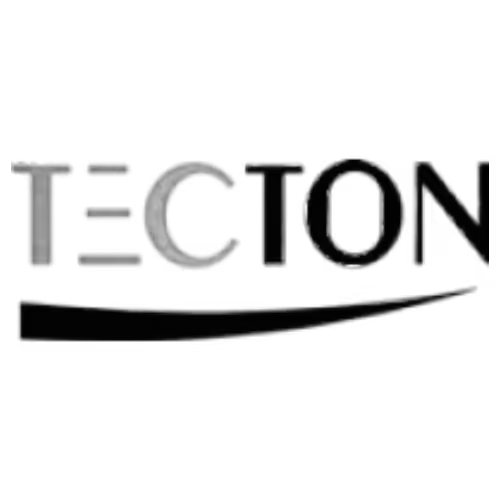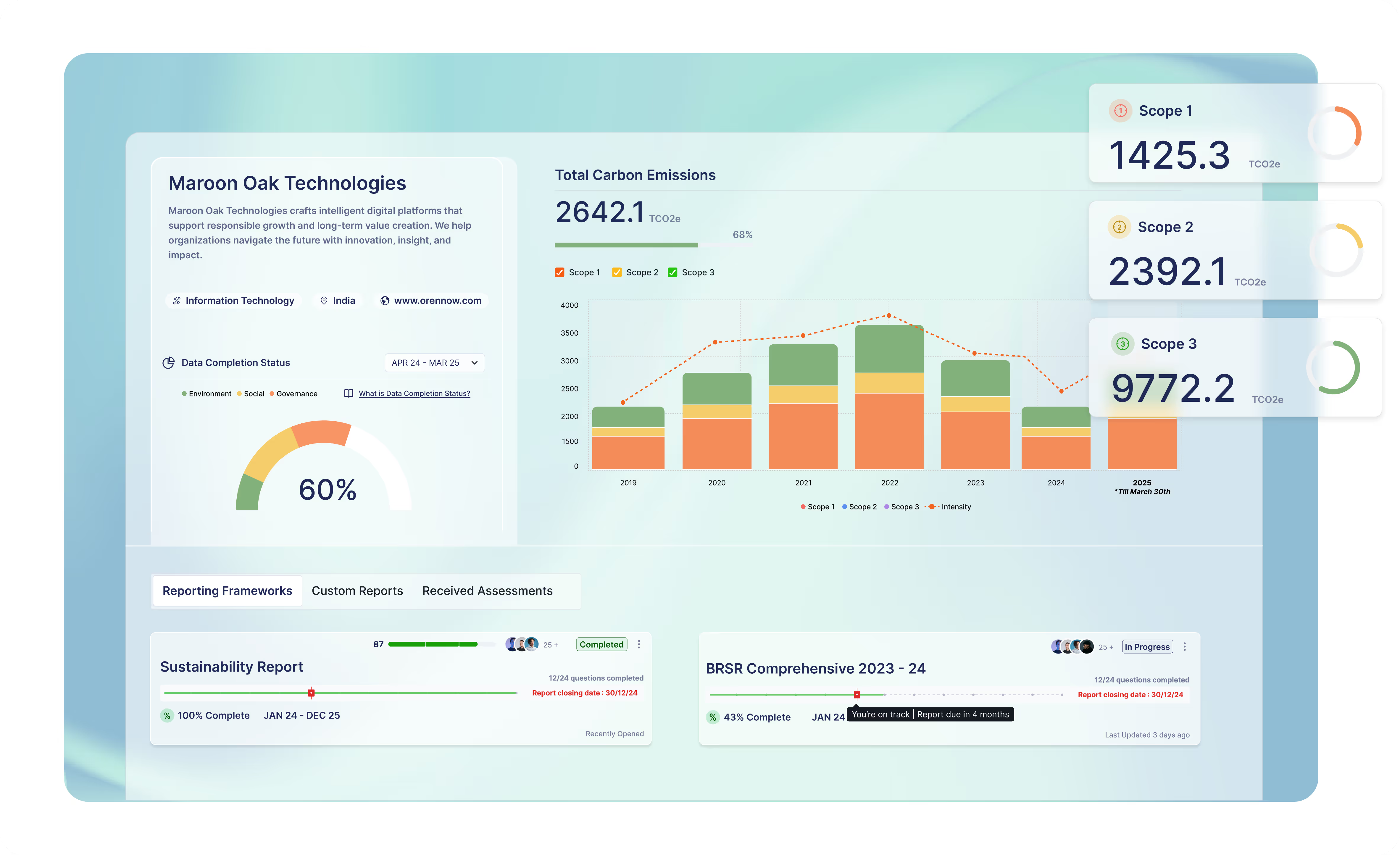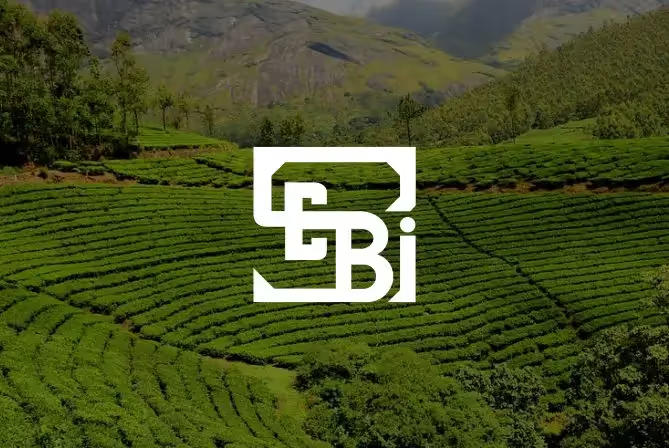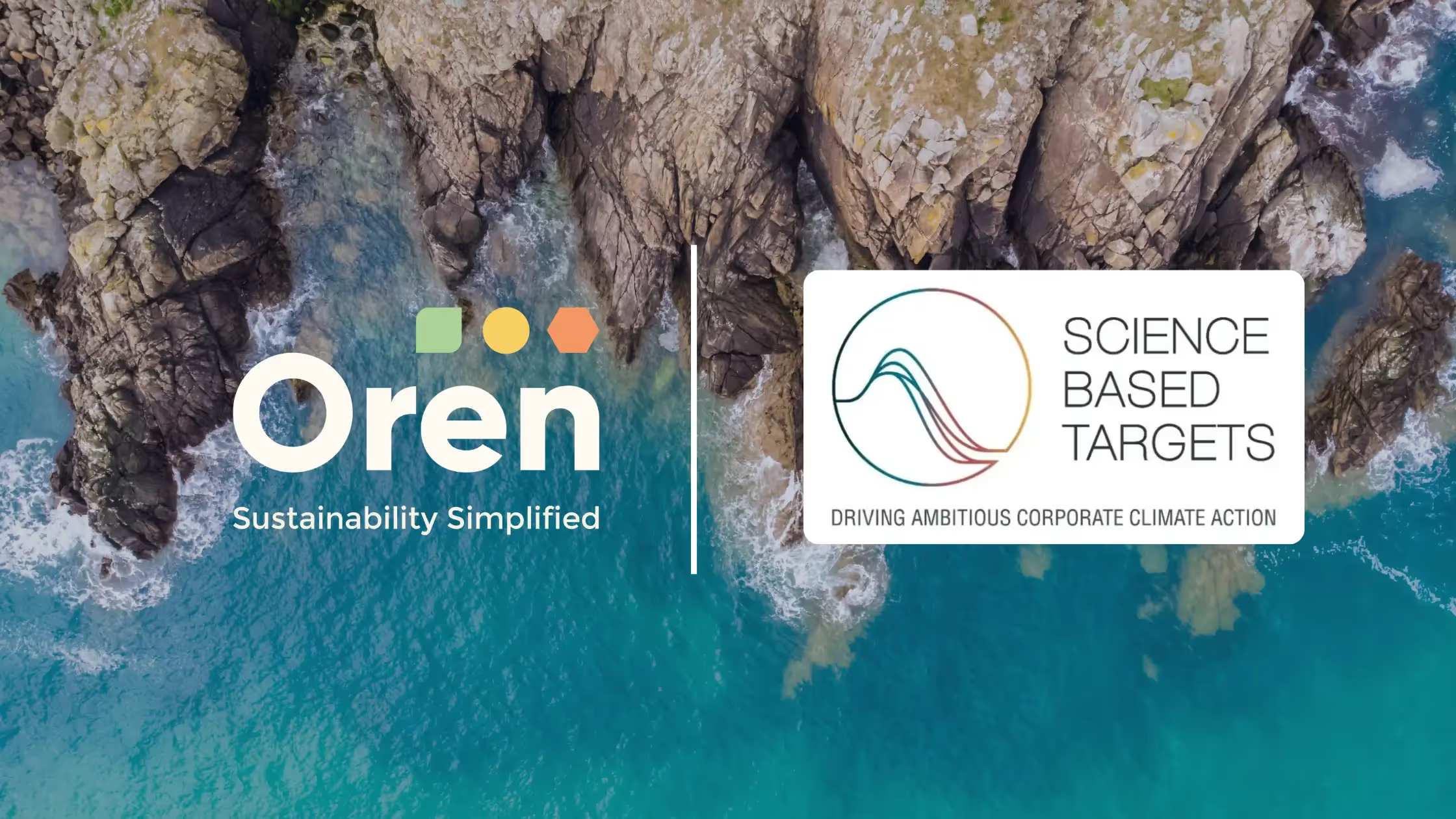
Science-Based
Targets for Nature (SBTN)
Science-Based Targets for Nature (SBTN) is a global initiative that guides corporations in setting and achieving science-based, nature-focused goals to minimise their negative impacts on the environment and society. Its clear and comprehensive framework addresses key areas such as land, freshwater, oceans, and biodiversity.
At Oren, we offer expert support throughout the SBTN journey, from assessment and prioritisation to goal setting and progress tracking, enabling companies to turn their commitments into real-world change.
Start your nature-positive journey with Oren today!




.avif)







































Momentum for Science-Based Targets for Nature
Understanding Science-Based Targets (SBTs)
Before diving into SBTN, it's important to understand what Science-Based Targets (SBTs) actually means. SBTs offer essential frameworks for businesses to align their own environmental ambitions with the ecological boundaries of the planet, catalysing legitimate and quantifiable action on sustainability. In addition to climate targets, the idea is spreading to include nature-related effects through initiatives such as Science-Based Targets for Nature (SBTN), which hopes to establish analogous scientific targets for corporates to tackle their impacts on biodiversity, water, land, and oceans.
By establishing SBTs, businesses can have a clear, evidence-driven roadmap for decarbonisation and, increasingly, nature-positive actions. This commitment leads to tangible gains such as improved reputation, lower regulatory risk, enhanced investor confidence, and operating efficiencies. Most importantly, SBTs ensure transparency and accountability, enabling stakeholders to monitor performance against scientifically based thresholds.

How SBTN Differ from SBTi?
| Feature | Science-Based Targets for Nature (SBTN) | Climate Targets (SBTi) |
|---|---|---|
| Primary Focus | Holistic health of the planet, encompassing all aspects of nature. | Limiting global warming by reducing greenhouse gas (GHG) emissions. |
| Scope | Broad, addressing impacts on freshwater, land, oceans, and biodiversity. Integrates climate action as one component. | Narrower, focused solely on Scope 1, 2, and 3 GHG emissions from operations and value chains. |
| Goal | Achieve a "nature-positive" future by reducing negative impacts and increasing positive ones across nature. | Align corporate emissions reductions with the Paris Agreement (limiting warming to 1.5°C or well below 2°C). |
| Key Areas Addressed | Freshwater use, land degradation/conversion, ocean health, biodiversity loss. | Carbon dioxide (CO2), methane (CH4), nitrous oxide (N2O), and other GHGs. |
| Drivers of Impact | Land/sea-use change, direct exploitation, climate change, pollution, invasive alien species. | GHG emissions from energy consumption, industrial processes, transportation, etc. |
| Methodology | Five-step process: Assess, Interpret & Prioritise, Measure & Set, Act (AR3T), Track & Disclose. | Setting emissions reduction targets based on various pathways (e.g., sector-specific, absolute contraction). |
| Inter-connectedness | Explicitly acknowledges the inter-connectedness of environmental challenges (e.g., climate and biodiversity). | Primarily focuses on climate as a distinct challenge, though recognising its broad impacts. |
How is the SBTN Formulated to Drive Nature-Positive Action?
The Science Based Targets for Nature (SBTN) are carefully developed to encourage nature-positive action through an evidence- and science-based process. The process starts with a baseline understanding of a company's most critical environmental impacts and how its business and supply chains affect the natural environment.
This phase is followed by an initial screening to determine "material" effects—those where an organisation has the greatest adverse impact or reliance on nature and is most directly connected to the Intergovernmental Science-Policy Platform on Biodiversity and Ecosystem Services' (IPBES)'s five immediate drivers of nature loss (land/sea-use change, direct exploitation, pollution, climate change, and invasive alien species).
Next, the interpretation and prioritisation steps allow organisations to identify hotspots and concerns that require remedial action. This process determines key elements of ecosystems and biodiversity requiring protection or restoration, based on such factors as the risk of extinction of species, the integrity of ecosystems, and regions of high importance for biodiversity. Targets are then measured, established, and reported for applicable domains like freshwater, land, and oceans.
How can you Implement & Track your progress with SBTN?
Companies interested in setting and tracking science-based targets for nature can start their journey by following SBTN's comprehensive five-step process with Oren's expert support. This structured methodology ensures a systematic and science-based roadmap towards nature-positive actions:
1. Assess
The process starts with a thorough evaluation of the company's entire value chain to understand its impacts on and dependencies on nature. This involves conducting a materiality assessment to identify which environmental pressures (e.g., water withdrawals, land conversions, pollution) are most significant for the business and where in its operations or supply chain these impacts occur. We will leverage our AI-powered ESG data management platform, Oren Sustainability Hub, to streamline these activities.
2. Set Priorities
After the assessment, Oren helps companies identify priority areas where they can have the most significant positive impact. This involves interpreting the assessment results, setting target boundaries (e.g., specific river basins or land areas), and ranking the most critical issues on environmental significance and business relevance. This step ensures resources are focused on high-impact interventions.
3. Measure and Set Goals
This crucial step involves quantifying current impacts and setting measurable, time-bound targets for specific nature domains such as freshwater (e.g., reducing water withdrawals by a certain percentage in a specific basin) and land (e.g., achieving zero deforestation in supply chains). SBTN provides detailed technical guidance and methodologies to ensure these targets are scientifically robust and contribute to planetary boundaries.
4. Act
With targets set, Oren also supports companies in implementing strategies and actions to achieve them. Actions might include adopting regenerative agriculture practices, improving water efficiency, preventing habitat conversion, or engaging in landscape-level conservation initiatives. This step often requires deep operational changes and supply chain collaboration.
5. Track
The final step involves continuous monitoring of progress against the set targets, verifying data, and adjusting actions as necessary with the help of Oren Sustainability Hub. This process ensures accountability and allows companies to adapt to changing conditions or new scientific insights.

SBTN Integration and Expert Support
Successfully implementing SBTN in your business requires constant support from specialised, experienced experts. Oren's SBTN consultancy services, along with our AI-powered ESG platform, provide a systematic process, guaranteeing you cover each step of your SBTN journey with accuracy. As your SBTN implementation partner, we offer important validation and disclosure assistance, ensuring you meet SBTN principles and are able to confidently make public target disclosures and regulatory reports.
We also provide industry-specific knowledge and tailored solutions for investors, financial institutions, and corporates, developing strategies that actually deliver nature-positive change. Don't do it yourself; have expert assistance with Science-Based Targets for Nature to integrate these critical commitments seamlessly into your business and deliver lasting results.
Talk to Oren's experts today to start your SBTN journey!
How Enterprises Benefit from SBTN’s Framework
1. Regulatory Preparedness
By actively establishing SBTN, companies can remain ready for changing nature-related rules, such as the Taskforce on Nature-related Financial Disclosures (TNFD) and the EU's Corporate Sustainability Reporting Directive (CSRD), making it easier to follow these rules in the future.
2. Enhanced Risk Mitigation
SBTN identifies and mitigates nature-related risks across value chains, including resource scarcity (e.g., water), supply chain disruptions from biodiversity loss, and reputational damage. This builds operational resilience and protects long-term financial performance.
3. Innovation and Cost Savings
The rigorous analysis required for SBTN often uncovers opportunities for innovation in processes, products, and supply chains, leading to greater efficiency and cost reductions.
4. Access to Capital
Investors increasingly factor nature-related risks and opportunities into their decisions. Aligning with SBTN can improve access to sustainable finance and attract environmentally conscious investors.
Science Behind SBTN Nature Targets
The Science-Based Targets for Nature (SBTN) initiative leverages the success of Science-Based Targets (SBTs) by recognising the urgent interdependencies between natural loss and climate change. The degradation of natural systems, like oceans and forests, reduces their ability to sequester carbon, which hastens climate change. On the other hand, a changing climate causes biodiversity loss and ecosystem collapse.
SBTN is based on the most current scientific knowledge about planetary boundaries and ecological thresholds, using reports from trusted organisations such as the IPCC and the IPBES. It offers a consistent framework to enable businesses to measure their effects and dependencies on nature in five domains: freshwater, land, ocean, biodiversity, and climate, with the first methods published for freshwater and land.

Achieve Measurable Impact with SBTN
Oren's SBTN solutions enable companies to set and pursue ambitious, science-based goals for nature with measurable effects in key environmental areas. Our end-to-end approach, centred around the SBTN Framework for Nature & Climate, puts in place the Assess, Reduce, Regenerate, Restore, and Transform (AR3T) hierarchy.
With in-depth Assessment & Readiness Planning, encompassing workshops, AI-powered data collection, and biodiversity footprint analysis, we determine primary impact areas and build strong baselines. This process is systematic and results in measurable outcomes and key performance indicators (KPIs).
Are you ready to measure & manage your impact on nature? Talk to Oren's experts to begin your SBTN journey!
How Oren Sustainability Hub helps?
SBTN Reporting
Template
Leverage our pre-configured SBTN Standards framework for a streamlined and efficient reporting experience, ensuring your disclosures are precise and compliant from day one.
Data
Mapping
Automate complex data collection and mapping to corresponding SBTN indicators. This precision helps accurately identify and validate your material topics, ensuring your efforts are focused where they matter most.
Adopt Best
Practices
Benchmark your performance against industry leaders. We help address information gaps and enhance the overall quality and credibility of your SBTN reporting.
High Quality
Reports
Create compelling, high-quality SBTN reports that effectively showcase your sustainability efforts, ensuring transparency and building trust with all stakeholders.
Go Beyond Reporting.
Start Driving Real Impact.
Frequently Asked Questions
How does SBTN relate to regulation?
Despite being a voluntary framework, SBTN plays a significant role in preparing companies for emerging nature-related regulations. Governments and reporting bodies worldwide are increasingly recognising the critical importance of nature, with frameworks like the Taskforce on Nature-related Financial Disclosures (TNFD) and the EU's Corporate Sustainability Reporting Directive (CSRD) gaining momentum.
How is SBTN related to sustainability and carbon markets?
While SBTN doesn't directly create carbon market mechanisms, it can inform nature-based solutions that generate carbon credits (e.g., reforestation, avoided deforestation). By emphasising ecosystem health, SBTN ensures that carbon market participation contributes to genuine environmental benefits and prevents unintended negative impacts on nature.
What are the challenges in adoption of STBN?
Adopting SBTN can present several challenges for companies. These often include a lack of in-house expertise and the complexity of data collection across diverse supply chains and geographical locations, particularly for nature-related metrics that are less standard than carbon emissions.
How can our company incorporate SBTN into our existing strategy?
Incorporating the SBTN framework into your existing strategy involves a systematic approach. Start with the "Assess" phase to understand your company's impacts and dependencies on nature across your value chain. Integrate this assessment with existing sustainability and risk management strategies with the help of Oren's experts.
What is the importance of SBTN for environmental conservation?
The SBTN is crucial for environmental conservation as it translates urgent scientific imperatives into concrete, actionable steps for businesses. It provides a standardised and credible methodology for companies to not only reduce their negative impacts but also positively contribute to nature's recovery.
What is the difference between TNFD and SBTN?
TNFD provides a reporting framework for companies to assess and disclose their nature-related risks, impacts, dependencies, and opportunities to financial markets. It's primarily about transparency and risk management for investors.
In contrast, SBTN offers a science-based methodology that enables companies to establish measurable targets and take action to minimise their negative impacts on nature while enhancing positive contributions.
What is the difference between SBTi and SBTN?
SBTi (Science-Based Targets initiative) focuses exclusively on climate action, guiding companies to set greenhouse gas (GHG) emission reduction targets aligned with limiting global warming to 1.5°C.
SBTN, on the other hand, not only tackles climate but also tackles freshwater, land, ocean health, and biodiversity loss, acknowledging their interdependence, and offers a comprehensive structure for attaining a future that is beneficial to nature.
What are the first targets of SBTN?
These first targets specifically address two critical nature domains: freshwater (covering both water quantity, like withdrawals from surface and groundwater, and water quality, such as nitrogen and phosphorus pollution) and land (focusing on preventing the conversion of natural ecosystems and reducing land footprint).
How does SBTN define "nature positive"?
According to SBTN, "nature positive" is a state where nature, including species and ecosystems, is regenerating rather than declining. For companies, achieving nature positive means halting and reversing their past and present negative impacts on nature, while simultaneously taking action to create a net positive impact.
Testimonials

Watch the Video Testimonial

Atul Khanapurkar
Executive Director, Shriram Pistons & Rings

Watch the Video Testimonial

Vidhi Thukral
Senior Manager, Max Financial Services


Shalaka Ovalekar
Company Secretary and VP-Legal, ADF Foods
Sustainability Simplified
Wherever you are in your sustainability journey, we help you advance with confidence.
Schedule a Call





